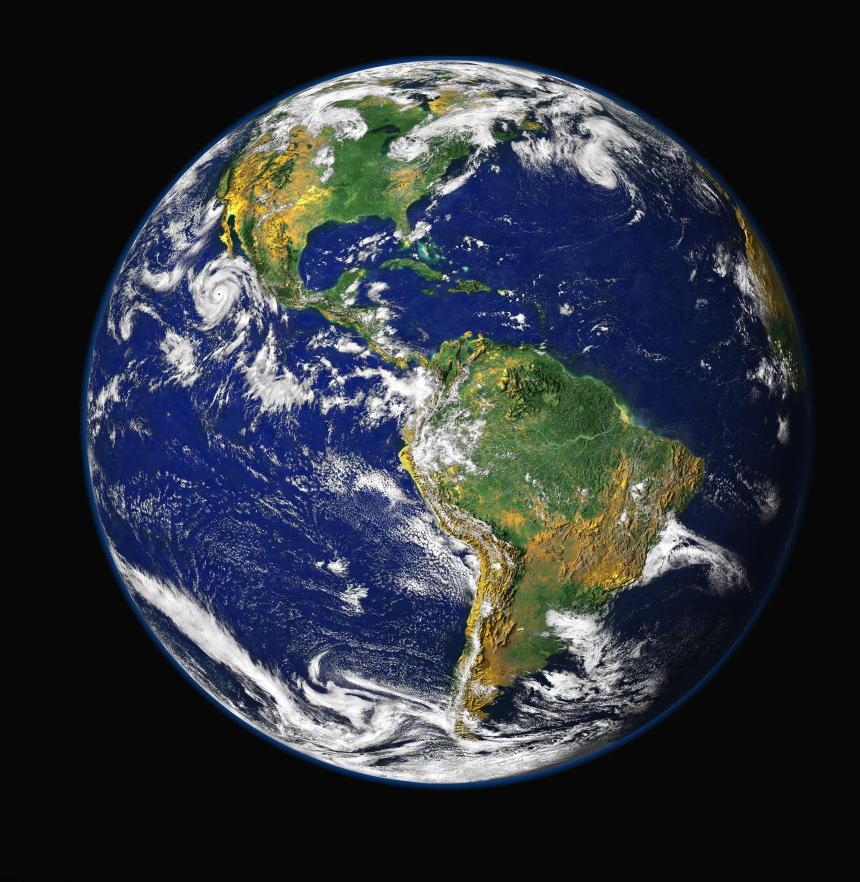Food for thought this Earth Day

Photo Credit: Geralt
By: Yuri Smishkewych | Published March 31, 2016
It’s 2155 and a lone angler, knee deep in brackish water amongst the reeds, spots something submerged in front of him shining in the mid-day sun.
He reaches down and picks it up for inspection—it’s an old metal sign. As he wipes the algae off its face, blue letters emerge: The sign reads “Cougar Walk.”
As unfathomable as this scenario may seem to us today, it is very likely what our great- great-grandchildren’s world will look like.
According to the United Nation’s International Panel on Climate Change (IPCC), an organization that provides scientific data on climate change to policymakers worldwide, sea levels may rise by 21 feet by 2116 if we do not address global warming.
To put it in perspective and by using the National Oceanic and Atmospheric Administration’s (NOAA) online Sea-Level Rise Viewer, which simulates the inevitable rising water levels due to climate change, that amount would make Kean’s Campus—which sits in the Elizabeth River watershed—look something more like the Meadowlands at present.
That is, unless we—as voters—do something about it.
April 22 is Earth Day, a day that we all should look past the geographical and sociopolitical borders that divide us and, as one, work together to address the very real and omnipresent threats that are putting our fragile earth in danger.
And, without a doubt, of all the environmental threats we face, none takes the world’s stage more prominently than global warming.
“Climate change is real. It is happening right now,” said Leonardo DiCaprio, who took time out of his acceptance speech at this year’s Academy Awards to remind worldwide audiences on the imminent threat. “We need to support leaders around the world who do not speak for the big polluters or the big corporations, but who speak for all of humanity,” he added.
But don’t just take it from Leo: Of the seven solutions recommended to curb climate change by Scientific American, the U.S.’s oldest and leading popular science magazine, the most important and long-term solution is to vote for politicians that are dedicated to climate action.
Why 2016?
In an U.S. News & World Report article titled “The Climate Change Election,” the 2016 presidential election is said to be the last time that voters may actually get to “vote on climate change” given the timespan needed to implement energy-reform legislation before it is too late.
“This will be a make-or-break presidency as far as our ability to avert a climate change catastrophe,” said Meteorologist and Director of the Earth Science Center at Penn State University Michael Mann, in the article.
So, of those running for president, who makes the climate change grade?
If you’re looking at Donald Trump, forget about it. He clearly stated numerous times, as recently as three months ago at a campaign rally in South Carolina, that climate change is a “hoax” and is part of a larger “money-making industry.” Need not mention the billionaire’s January 2014 Tweet that this “global warming bullshit has got to stop.”
Sen. Ted Cruz is a non-believer, too. According to the League of Conservation Voters publication, “In their owns words: 2016 Presidential Candidates on Climate Change,” Cruz maintains that climate change is a “pseudoscientific theory” that “big government politicians” use in order to gain “control of the energy sector, the economy, and every aspect of our lives.”
Unlike his fellow Republicans running for office, Gov. John Kasich follows a more moderate stance.
“You asked me about climate change—I think it’s real,” said Kasich at a speech in New Hampshire in November, “but I think that the impact human beings have on it is yet to be determined. So I would not be enacting all these policies that could throw people out of work.”
In contrast, both Hillary Clinton and Sen. Bernie Sanders understand that climate change action is imperative.
Following her endorsement by the League of Conservation Voters in November, Clinton stated in a YouTube video that she would build upon President Barack Obama’s Clean Power Plan. She also believes that we need a “clear

Our fragile earth from space. Photo Credit: NASA
economic plan that goes hand-in-hand with combating climate change.”
Like Clinton, Sanders believes in a clean energy economy, although the Vermont senator’s plan, which is available online at berniesanders.com, is more rewarding.
Alongside creating a clean-energy workforce that would, among other things, re-build America’s failing infrastructure, Sanders would return billons of dollars into the pockets of working families by keeping the fossil fuel industry-giants in-check, specifically when it comes to unfair rate hikes.
In short, let’s take a moment this Earth Day to consider what’s at stake in November: Do we need deniers, or do we need doers?
Yuri Smishkewych may be reached at ysmishke@kean.edu.
Follow The Tower on Twitter @KeanTower. Find The Tower on Facebook.

You must be logged in to post a comment.